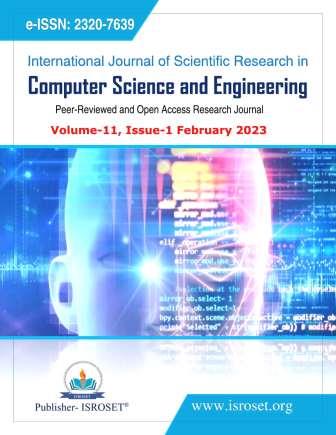EEG Signals Independent Component Analysis and Time/Frequency Analysis by EEG Lab Tools
Keywords:
EEG, ICA, MEG, TFA, ITC, MAPAbstract
EEG machines supplies output graph records i.e. are analyses by expert knowledge of doctors. In this case we cannot found out the accurate component analysis of signal. So there may be some error. So we have two objectives. a) To propose time domain and time-space domain statistical based features that can be used to classify emotion from electroencephalogram signals (EEG). b) To implement suitable classification model to classify emotion from electroencephalogram signals (EEG) which gives efficient accuracy. We have also used EEG Lab tools of MATLAB programing language which is used for dealing out uninterrupted and event-related EEG, MEG and other electrophysiological data using neutral component analysis, time frequency analysis and artifacts elimination. This tools offers an interactive graphic user interface which permitting users to flexibly and interactively procedure their high quality density EEG and other dynamic brain data using independent component analysis (ICA) and time/frequency analysis (TFA).This paper presented using EEG machine signal implementation by EEG lab software.
References
W. Rosalind Picard, Elias Vyzas and Jennifer Healey, “Toward machine emotional intelligence: analysis of affective physiological state,” IEEE Transaction on pattern analysis and machine intelligence, vol. 23, Issue. 10, pp. 1175-1191.
M. Murugappan, R. Nagarajan, S.Yaacob ,”Combining spatial filtering and wavelet transform for classifying human emotions using EEG Signals”, Journal of Medical and Biological Engineering, Vol.31, Issue.1, pp.45-51, 2011.
Babiloni, Fabio, Luigi Bianchi, J. Semeraro Francesco, R. Millan del, Mourino Josep, Angela Cattini, Serenella Salinari, Maria Grazia Marciani, and Febo Cincotti, “Mahalanobis distance based classifiers are able to recognize EEG patterns by using few EEG electrodes,” Proceedings of the 23rd Annual International Conference of the IEEE, vol. 1, pp. 651-654, 2001.
K. H. Kim, S. W. Bang, S. R. Kim,” Emotion recognition system using short-term monitoring of physiological signals”, Medical and biological engineering, 2004.
Jatupaiboon, Noppadon, Pan-ngum Setha, and Pasin Israsena, “Emotion Classification using Minimal EEG Channels and Frequency Bands,” International Joint Conference on Computer Science and Software Engineering, pp. 21-24, May 2013.
Sohaib, Ahmad Tauseef, et al. ”Evaluating classifiers for emotion recognition using EEG.” Foundations of Augmented Cognition. Springer, Berlin Heidelberg, (2013). pp.492-501.
S. A. Hosseini, M. A. Khalilzadeh, M. B. Naghibi Sistani, V. Niazmand, “Higher order spectra analysis of EEG signals in emotional stress states”, 2nd International Conference on Information Technology and Computer Science, 2010.
M.R.Nazari Kousarrizi, A. Asadi Ghanbari, M.Teshnehlab, M.Aliyari, A.Gharaviri, "Feature Extraction and Classification of EEG Signals using Wavelet Transform, SVM and Artificial Neural Networks for Brain-Computer Interfaces," International Joint Conference on Bioinformatics, System Biology and Intelligent Computing(IEEE), 2009, pp. 352-355
F.Lotte and C.Guan, "Learning from other subject help reducing brain-computer interface calibration time," Acoustic Speech and Signal Processing (ICASSP), 2010 IEEE International Conference on IEEE, pp.614-617, 2010.
Downloads
Published
How to Cite
Issue
Section
License

This work is licensed under a Creative Commons Attribution 4.0 International License.
Authors contributing to this journal agree to publish their articles under the Creative Commons Attribution 4.0 International License, allowing third parties to share their work (copy, distribute, transmit) and to adapt it, under the condition that the authors are given credit and that in the event of reuse or distribution, the terms of this license are made clear.







